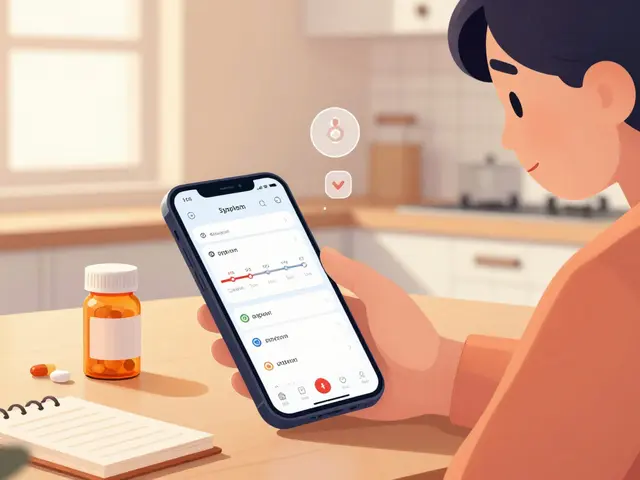Metoprolol: What It Is, How It Works, and When to Use It
When working with metoprolol, a prescription beta‑blocker that slows the heart and lowers blood pressure. Also known as Lopressor, it belongs to the class of drugs called beta blockers, medications that block adrenaline receptors to reduce heart strain. Doctors prescribe it for conditions like hypertension, high blood pressure that increases the risk of stroke and heart attack and for various forms of cardiovascular disease, any disorder affecting the heart or blood vessels. Understanding its role helps you decide if it fits your health plan.
How Metoprolol Does Its Job
Metoprolol works by binding to beta‑1 receptors in the heart. This subject‑predicate‑object relationship – "metoprolol blocks beta‑1 receptors" – reduces heart rate, lowers cardiac output, and eases the workload on the heart. The result is lower systolic and diastolic pressure, which can prevent damage to arteries. In patients with angina, the drug cuts down oxygen demand, easing chest pain. For atrial fibrillation, it helps control ventricular response, keeping the rhythm more regular. These mechanisms make metoprolol a go‑to option for many heart‑related issues.
Because metoprolol is cardio‑selective, it targets the heart more than the lungs. That property matters for people with asthma or COPD, who might react poorly to non‑selective beta‑blockers. Still, doctors will review your respiratory history before prescribing. If you’re on other heart drugs – like ACE inhibitors, diuretics, or statins – the combination is usually safe, but dose adjustments may be needed.
Dosage varies by condition. For hypertension, typical doses range from 25 mg to 100 mg once daily. For post‑myocardial infarction, doctors may start low (25 mg) and increase gradually. Extended‑release (ER) tablets offer once‑daily dosing, while immediate‑release forms may be taken twice daily. Always follow your prescriber’s schedule; skipping doses can cause rebound tachycardia, which feels like a sudden surge in heart rate and anxiety.
Side effects are usually mild but worth noting. Commonly reported issues include fatigue, cold hands or feet, and mild dizziness. Because the drug slows the heart, some people feel light‑headed when standing up quickly – a sign of orthostatic hypotension. Rarely, patients experience depression or nightmares, especially at higher doses. If you notice severe shortness of breath, swelling of ankles, or a rapid weight gain, contact your doctor right away; these could signal heart failure worsening.
Drug interactions can change how metoprolol works. Calcium‑channel blockers like verapamil boost its effect, potentially causing too‑low heart rates. Certain antidepressants (e.g., fluoxetine) inhibit its metabolism, raising blood levels. Over‑the‑counter cold medicines that contain pseudoephedrine can counteract its blood‑pressure‑lowering effect. Always share a full medication list with your healthcare provider, including supplements and herbal products.
When it comes to buying metoprolol, many look for cheaper generic options online. The key is to choose a licensed pharmacy that requires a valid prescription, displays a physical address, and offers secure payment. Look for certifications such as VIPPS (Verified Internet Pharmacy Practice Sites) or local regulatory approvals. Compare prices, but never sacrifice safety – counterfeit pills can contain the wrong dose or harmful fillers. A quick checklist: prescription required, pharmacist contact info, clear return policy, and customer reviews that mention product authenticity.
If you’re already on metoprolol and travel abroad, check whether your prescription is accepted in the destination country. Carry a copy of the doctor’s note in English, and keep the medication in its original packaging. This reduces the risk of customs confiscation and helps local pharmacists verify the drug if needed.
Patients commonly wonder whether they can switch from metoprolol to another beta‑blocker, like atenolol or carvedilol. The answer depends on why you’re taking it. For hypertension alone, a switch may be fine, but after a heart attack, doctors often prefer metoprolol because of its proven outcomes. Always discuss any changes with your cardiologist; abrupt switches can cause rebound hypertension or arrhythmias.
In summary, metoprolol is a versatile tool in the heart‑health toolbox. It lowers blood pressure, controls heart rhythm, and reduces the workload of a stressed heart. Knowing how it works, its dosing options, potential side effects, and safe buying practices empowers you to use it wisely. Below you’ll find a curated set of articles that dive deeper into related topics – from buying cheap generics safely to comparing other heart meds and managing common side effects. Explore the collection to get practical tips, real‑world comparisons, and up‑to‑date guidance that can help you make the most of your treatment plan.



